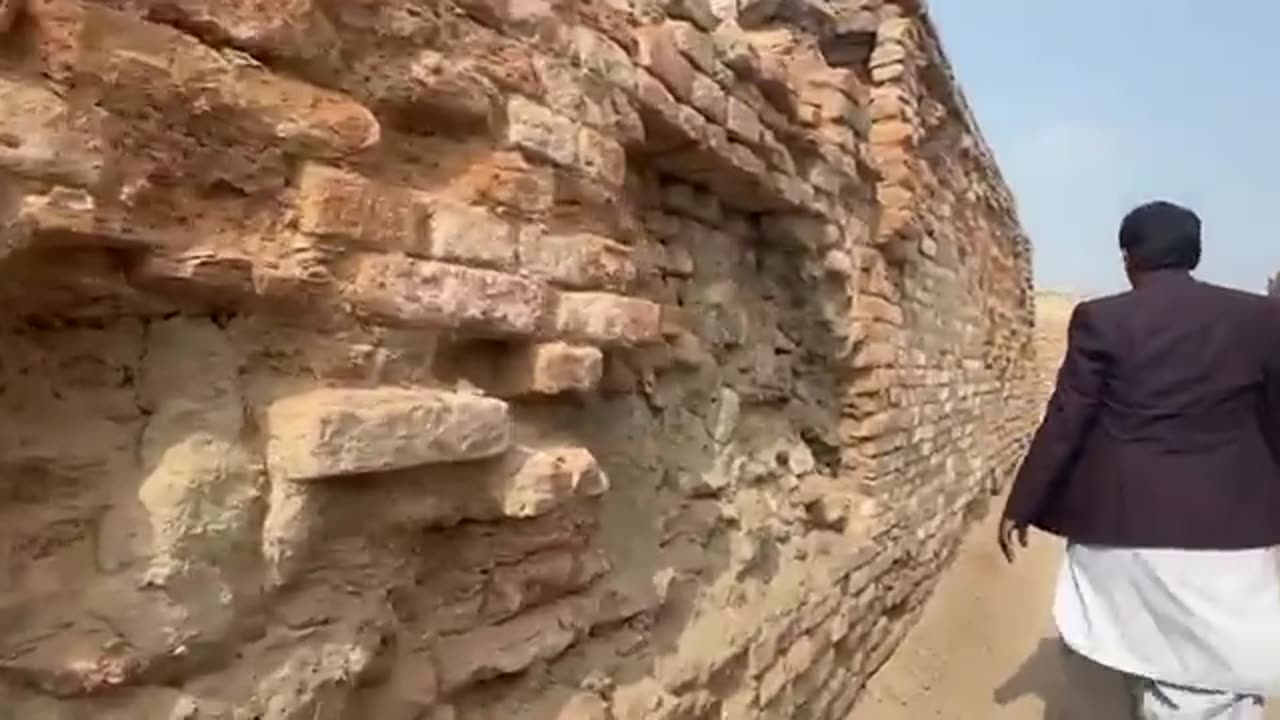Premium Only Content

Mistry of mohenjodharo . Indus valley civilization
Mohenjo-daro, part of the ancient Indus Valley Civilization, flourished around 2500 BCE in present-day Pakistan. It is one of the earliest urban settlements, showcasing advanced city planning and sophisticated infrastructure.Urban Planning: The city was laid out in a grid pattern, featuring well-organized streets and drainage systems. This level of planning indicates a high degree of civic organization.Architecture: Buildings were constructed using standardized fired bricks. Major structures included residential areas, public baths, and granaries, reflecting a complex social and economic life.The Great Bath: This large, public bathing area is one of Mohenjo-daro's most remarkable features, suggesting the importance of ritual purification.Water Management: The city had an advanced drainage system, with covered drains along the main streets, which helped manage waste and prevent flooding.Social Organization: The uniformity in building materials and town planning suggests a centralized governance or communal effort.Trade and Economy: Mohenjo-daro was a hub of commerce, with evidence of trade links with Mesopotamia, showcasing a network of exchange for goods such as metals, precious stones, and textiles.Artifacts and Script: Numerous artifacts, including pottery, tools, and the undeciphered Indus script, provide insights into the daily life, art, and administrative practices.Decline: The reasons for the civilization's decline around 1900 BCE remain speculative, with theories ranging from climate change to invasions or internal societal collapse.Mohenjo-daro represents a peak of urban development in the ancient world, reflecting a high degree of sophistication in its social, economic, and technological aspects.
-
 9:27
9:27
MattMorseTV
2 days ago $17.85 earnedHe just lost EVERYTHING.
76K117 -
 7:10:39
7:10:39
MyronGainesX
1 day agoFormer Fed Explains Serial Killer Israel Keyes, Yahweh ben Yaweh, And The El Rukn Gang, And Police Shooting Reactions!
138K35 -
 4:22:33
4:22:33
Due Dissidence
15 hours agoGaza STARVATION Hits Tipping Point, Flotilla CAPTURED, Bongino BREAKS SILENCE, Maxwell MEETS DOJ,
57.1K133 -
 10:52:37
10:52:37
GritsGG
16 hours agoWin Streaking! Most Wins 3180+! 🔥
100K2 -
 3:01:03
3:01:03
This is the Ray Gaming
8 hours agoSunday Night LIVE | Rumble Premium Streamer
31.1K -
 2:42:31
2:42:31
Barry Cunningham
13 hours agoPRESIDENT TRUMP IS SAVING AMERICA ONE DEAL AT A TIME! UNBELIEVABLE!
95.5K57 -
 5:12:47
5:12:47
EricJohnPizzaArtist
5 days agoAwesome Sauce PIZZA ART LIVE Ep. #56: Bret “The Hitman” Hart Tribute with SoundBoardLord!
52.7K8 -
 1:38:08
1:38:08
HELMETFIRE
8 hours ago🟢GAMING WITH FIRE EP4🟢RUMBLE TAKEOVER!🟢
36.6K -
 5:16:57
5:16:57
iCheapshot
9 hours agoCheap Plays Warzone Again? What!?
32.3K1 -
 2:30:14
2:30:14
PandaSub2000
11 hours agoCHAOS & FURY | Episode 27: Attack Of The Cranks (Edited Replay)
39.7K1